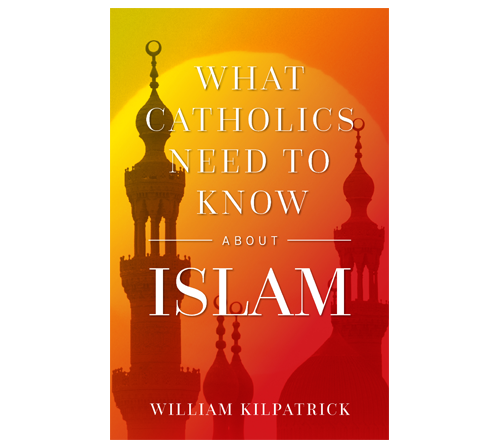Should the Church Follow Suit?
Cardinal Victor Manuel Fernandez the head of the Dicastery for the Doctrine of the Faith just announced that his office is preparing a “very important” document titled “Tickle Me with Your Toes: The Art of Erotic Pedicure.” Oops! My mistake. Fernandez wrote “Tickle Me with your Toes” when he was only thirteen but, thankfully, never published it. The new document, which is still untitled, will be on the subject of “human dignity.”
The forthcoming document is bound to raise eyebrows since it will arrive hot on the heels of the highly controversial document on same-sex blessings, Fiducia Supplicans. But not to worry. Cardinal Fernandez promises that the new text will allow “most people who are concerned” about his work “to be put at ease.”
That will be a major feat. Fiducia Supplicans was also supposed to put people at ease (over the matter of same-sex blessings), yet all it seems to have accomplished is to move the Church a giant step closer to schism.
At this point, the only thing that would put many Catholic minds at ease is for Fernandez to resign. In fact, several prominent Catholic laymen have called for Fernandez to resign, while Cardinal Robert Sarah has declared Fiducia Supplicans to be heretical. Meanwhile, the blessing of same-sex couples is being resisted by bishops in parts of Europe and Latin America. In addition, the president of the episcopal conferences of Africa and Madagascar announced that same-sex blessings will not be implemented in the African continent.
So, what makes Cardinal Fernandez so sure that his new document on human dignity will put people “at ease?” Well, possibly because the document will deal with issues such as gender theory and surrogate motherhood—issues about which Francis holds views similar to those of the average Catholic. Or so we are told. I find it difficult to believe that Francis really thinks gender theory is a “dangerous ideology” when about 80 percent of his top appointments are gender ideologues.
Nevertheless, Fernandez is sure to use the same bait-and-switch tactics he used in Fiducia Supplicans—namely, to insist that the Church’s teachings on these matters have not changed, while introducing “novelties” which will ensure that they do change.
In short, documents coming out of the Vatican these days need to be read as carefully as you would read the face of a card sharp in a high-stakes poker game.
Am I saying that Vatican leaders are no different than card sharps? Well, yes and no. Like card sharps, they play by a different set of rules. But unlike card sharps, they let you know in advance what the rules are. And the chief rule is that truth is relative.
No matter what Francis or Fernandez or their allies may say about the “perennial teachings of the Church,” they don’t really believe in perennial truths. Rather, they believe that truth is relative to the times, and when the times change, the truth must follow suit. Thus, there is no guarantee that a doctrine currently accepted as true will continue to be so accepted.
Let Chris Christie explain it for you. Chris Christie? Yes. When you look at things from the right angle, you’ll notice that Christie shares several things in common with Pope Francis. Christie identifies as a Catholic and so does Francis (who, seemingly, also identifies as a Pachamamian.) Christie traces his ancestry back to Italy and so does Francis. Christie is a critic of Trump and so is Francis. Francis used to be a bouncer, and Christie is built like one.
But these are just superficial similarities. The important thing is that Christie also shares Francis’s views on the relativity of truth. More specifically, Christie now says that his views on same-sex marriage have shifted. As governor of New Jersey, he was opposed to gay “marriage.” However, following the release of the Vatican document on same-sex blessings, he says he no longer has any objection.
How so? Christie explained: “This past week or two, Pope Francis is now allowing blessings of same-sex couples, even the Church is changing.”
Christie also said “Society has changed and what people are accepting in our country now is different than when I was growing up…” He might have added that what people are now accepting in the Church is totally different than what was accepted a mere three years ago. In 2021, the Congregation for the Doctrine of the Faith (now headed by Fernandez and renamed Dicastery for the Doctrine of the Faith) stated clearly that the Church has no power to bless same-sex unions or relationships
Pope Francis hasn’t yet signed on to same-sex “marriage,” but odds are high that he will. One giveaway is that, like Christie, he tends to use the same “the-times-they-are-a-changing” argument. Indeed, he doesn’t just tend to use it. He uses it at every opportunity.
For instance, just days after Francis approved the blessings for same-sex couples, he gave a Christmas address to the Roman Curia, warning against “rigid theological positions” that prevent us from “moving forward.”
Moving forward to what? We are told to move away from “our comfort zones,” “our fear and rigidity,” “our complacency,” and “our prejudices.” But it’s not at all clear what we should journey toward, except that we should journey along “unexplored paths and new roads.” Francis does make reference to the journey of the Magi, but he seems more interested in the activity of “journeying forward” than in the destination. If the wise men had followed Francis’s advice they would have stopped over in Bethlehem for a few days and then continued the search for a still more enlightening and elusive Messiah.
Francis’s emphasis on moving with the times may seem like the latest thing, but actually it’s an old and shopworn idea. Around the turn of the twentieth century, it was known as Modernism. Modernist clerics and theologians suffered from what might be called an historical superiority complex. They believed that theology, like our knowledge of science, is constantly evolving and their main interest was in the “development of doctrine.”
Today’s modernist clerics—Francis, Fernandez, Hollerich, etc.—are currently working on the evolution of the Church’s teaching on marriage. They hope to “develop” the doctrine to the point where it means the exact opposite of what it has always meant. And they’re hoping that the “rubes” don’t catch on.
This idea that what’s newest is automatically what’s best has always been popular because it has always seemed so…modern. But it’s actually a very simplistic and shallow idea. C.S. Lewis called it “chronological snobbery”— “the uncritical acceptance of the intellectual climate common to our own age…” G.K. Chesterton, who held a similar view, observed that a modernist “might just as well invent a creed called Mondayism, meaning that he puts special faith in the fancies that occur to him on Monday.”
Of course, these humorous jabs at Modernism shouldn’t make us forget that Modernism (or up-to-date-ism) has a dangerous potential. In the early twentieth century, the newest thing in Imperial Russia was an idea called “communism.” In the Germany of the 1930s Nazism was the most vibrant and fashionable movement—attractive to young and old alike.
Modernism is still alive today, and as fashionable as ever. It goes by a number of names—“progressivism,” “wokeism,” “diversity and inclusion” and so on. Church progressives have a different vocabulary— “contextualism,” “dialogue,” “synodal way,” “accompaniment,” and “signs of the times.”
But the new modernism in the Church is essentially the same as the old modernism in the sense that it wishes to bring the Church into conformity with what’s happening now.
The new modernists seem to believe that we live in special times with new problems and new possibilities and also with new wisdom if only the Church can learn to “dialogue with the world.”
Thus, in a motu proprio issued to the Pontifical Academy of Theology (PATH), Pope Francis stated that PATH required a new set of norms “to make them more suitable to the mission that our time imposes on theology.”
This “paradigm shift,” said Francis, would commit the Church to “a fundamentally contextual theology, capable of reading and interpreting the Gospel in the conditions in which men and women daily live…” That’s a mouthful, but what it comes down to is that instead of the world being shaped by the Gospel, the Gospel should be reshaped and reinterpreted in order to conform to the spirit of the times.
So, once again the modernists are indulging in chronological snobbery. With a 2,000-year advantage, Francis looks down from his perch and judges the early Church to be deficient. Thus, he maintains that his new statutes for PATH would help theologians to “more easily pursue the goals that the present time requires.”
Well, maybe. The passage of two thousand years provides a lot of hindsight. On the other hand, Peter and Paul and Matthew, and John were there at the beginning. And what they had to say has not lost its power and clarity.
In a recent article for The Catholic Thing, Father Jeffrey Kirby, STD puts the matter in focus:
“At what point do we acknowledge that we’ve accommodated enough to the world? What exactly are we hoping that the fallen world will contribute to the Gospel message? At what point do we realize that we’ve stopped evangelizing and are in fact being evangelized by the false gospel of a world at odds with the grace of God?”
Picture above: The non-judgmental Jesus
Picture credit: Pixabay


